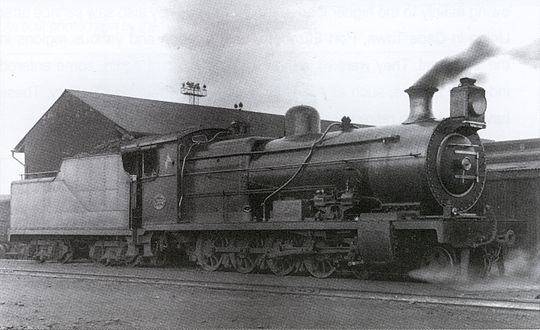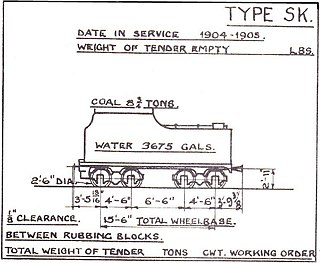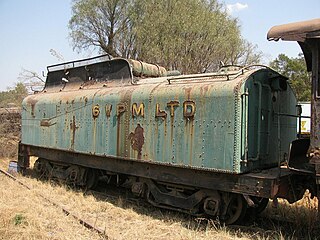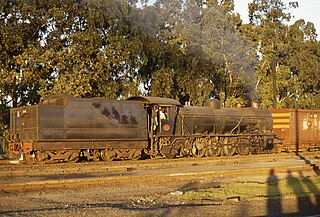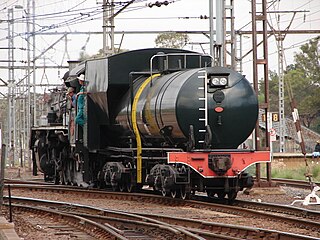Type TJ tender on NGR Class B of 1909 | |||||||||||||||||||||||||||||||||||
| |||||||||||||||||||||||||||||||||||
| |||||||||||||||||||||||||||||||||||
| |||||||||||||||||||||||||||||||||||
The South African type TJ tender was a steam locomotive tender from the pre-Union era in the Natal Colony.

The Union of South Africa is the historical predecessor to the present-day Republic of South Africa. It came into being on 31 May 1910 with the unification of the Cape Colony, the Natal Colony, the Transvaal, and the Orange River Colony. It included the territories that were formerly a part of the South African Republic and the Orange Free State.
Contents
- Manufacturers
- Characteristics
- Locomotives
- Classification letters
- Modifications and rebuilding
- Modifications
- Rebuilding to Type TL
- Illustration
- References
The Type TJ tender first entered service in 1909, as tenders to the first five Class B4-8-2 Mountain type steam locomotives which were acquired by the Natal Government Railways in that year. These locomotives were designated Class 3 on the South African Railways in 1912. [1] [2] [3]

The Natal Government Railways (NGR) was formed in January 1877 in the Colony of Natal.

The South African Railways Class 3 4-8-2 of 1909 was a steam locomotive from the pre-Union era in the Colony of Natal.



